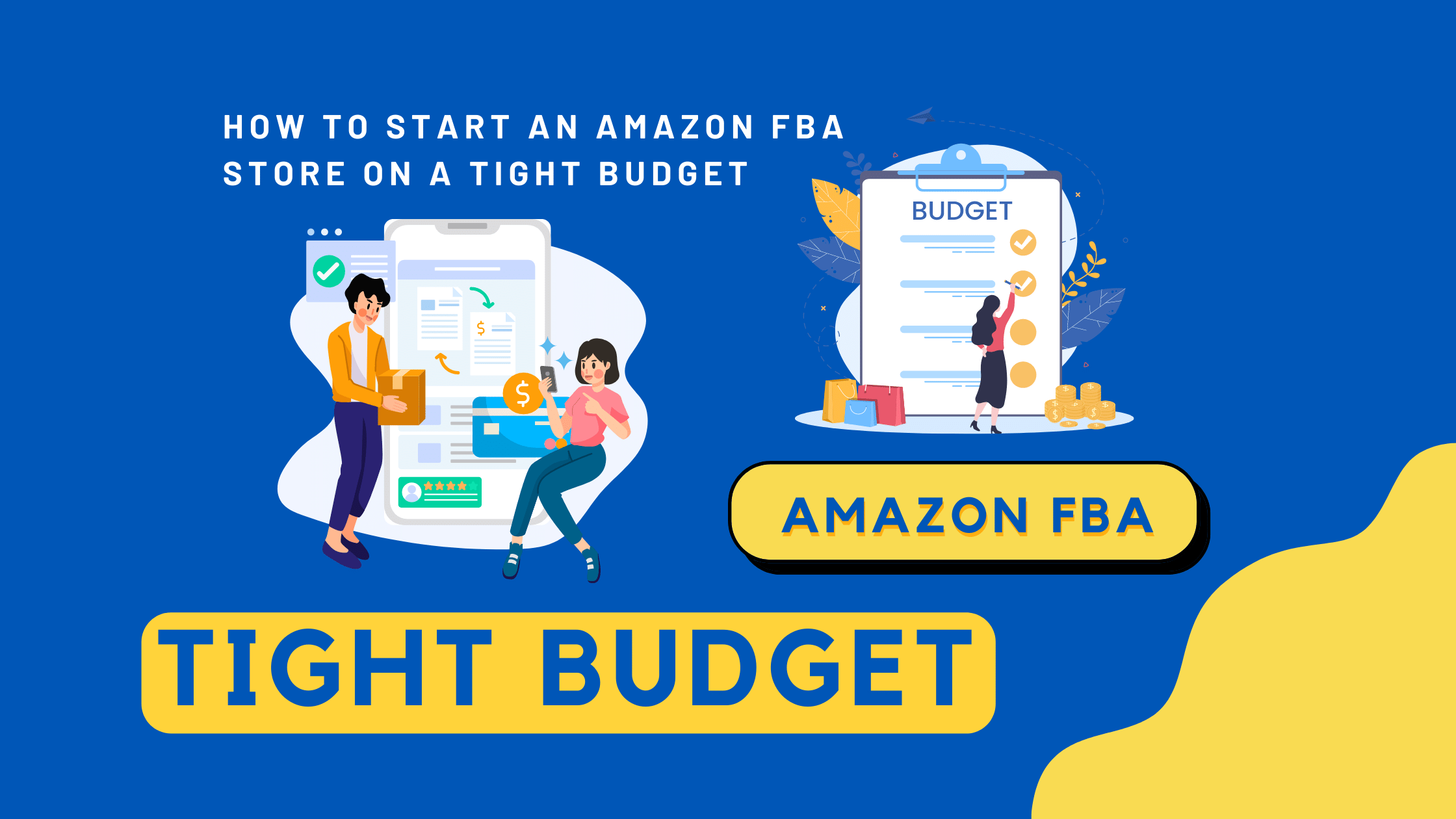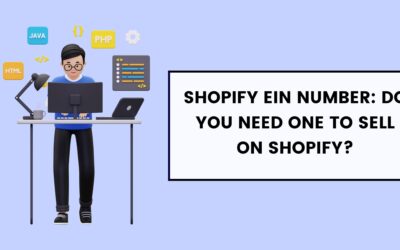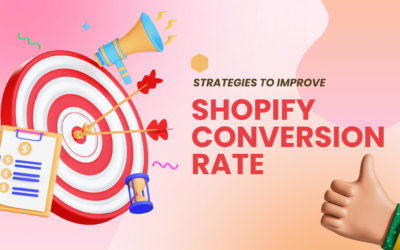How to Start an Amazon FBA Store on a Tight Budget
In this article, we will take a deep dive into how to start Amazon FBA without breaking the bank.
I’ve seen countless ambitious souls venture into the Amazon jungle, some with big bags of investment and others with just a shoestring budget. You’d be surprised how often the underdogs, with careful budgeting and a pinch of innovation, outshine the big spenders. Whether you’re looking to be the next Jeff Bezos or just aiming for a steady income stream, starting on the right foot—and with the right budgeting plan—is crucial.
Lets jump in
Understanding Amazon FBA
What is Amazon FBA, anyway?
At its core, Amazon FBA—which stands for “Fulfillment by Amazon”—is a service that allows sellers like you and me to store our products in Amazon’s fulfillment centers. Think of it as outsourcing your warehouse needs. But Amazon doesn’t just stop at storing; they pick, pack, and ship the products for you, and they even handle customer service and returns!
Now, let’s say you have a fantastic product, perhaps a new line of organic skincare. With FBA, instead of wrapping and shipping each jar of cream yourself (or managing a warehouse team to do it), you’d send your inventory over to Amazon. Then, every time a customer clicks that golden “Buy Now” button, Amazon takes care of the rest. Yes, it’s almost like magic.
Why Should I Use Amazon FBA for My Business?
- Global Reach with Local Efficiency: Amazon has a gargantuan network of fulfillment centers spread across the globe. This means your product can easily reach a customer in bustling New York City or a quiet town in France, often with the promise of two-day Prime shipping.
- Hands-off Operations: This is a boon for budding entrepreneurs, especially those juggling other commitments. No need to worry about storage, packing, shipping, or handling returns. I remember when I first ventured into e-commerce, the logistics were daunting. FBA was my lifesaver!
- Trust Factor: Having your products fulfilled by Amazon adds a layer of trust. Customers often feel more comfortable knowing a reliable entity handles their products, and they’re more likely to buy when they see that familiar ‘Fulfilled by Amazon’ badge.
- Round-the-Clock Customer Service: Amazon’s customer service is available 24/7. Whether it’s a misplaced package or a refund request, their team handles it, allowing you to focus on scaling your business.
- Prime Eligibility: Products that Amazon fulfils automatically become eligible for Prime, Amazon’s premium service. This boosts visibility and increases the likelihood of sales as Prime members often search for products with the Prime logo.
Starting with FBA does require an investment, both in terms of time and money.
But given the benefits and the potential for scaling, it’s often a worthy investment for those eager to make a mark in the world of e-commerce. And since you’re on a tight budget, don’t worry; we will delve deep into how to make the most of every dollar you spend.
Getting Started: Initial Costs & Budgeting
One of the most common questions for any budding entrepreneur: “How much will this cost me?” Before you dive into the Amazon FBA world, it’s crucial to understand the costs associated so you can budget accordingly. A tight budget doesn’t mean you can’t succeed; it just means you need to be smart with your spending. Let’s demystify those initial expenses:
Amazon Seller Account Fees
- Individual Seller Account: Perfect for those starting slow. It costs nothing monthly, but you’ll pay $0.99 for every item sold.
- Professional Seller Account: If you anticipate selling more than 40 items monthly, this $39.99 monthly subscription is the way to go. It might sound like a leap, but in my early days, I quickly realized the sales volume made this the more economical choice. (Amazon FBA revenue calculator)
Branding and Packaging
- Logo Design: If you don’t have a design bone in your body, hiring a freelancer might be a good idea. Websites like Fiverr or Upwork can offer affordable services starting at $5.
- Packaging Design: The product’s first impression! Costs can vary, but budget-friendly options exist. I once managed to get custom packaging designed for just $50, and it looked stellar!
Shipping
- To Amazon’s Fulfillment Centers: This cost depends on the volume and weight of your products. If your supplier is overseas, like in China, consider using freight forwarders who can offer competitive rates. Remember, every cent saved in shipping contributes to your profit margin!
Storage
- Amazon Storage Fees: These are based on the volume (in cubic feet) of your products stored in Amazon’s warehouses. There are two types:
- Monthly Inventory Storage Fee: Ranges from $0.69 to $2.40 per cubic foot, depending on the time of the year. Yes, the holiday season is pricier!
- Long-Term Storage Fee: If items stay in Amazon’s warehouse for over 365 days, additional fees kick in. This is Amazon’s nudge to remind you to keep your inventory moving!
Packaging Materials (If Self-Prepping)
- While Amazon handles packaging for customer shipments, you need to prep products sent to Amazon’s centers. Basic supplies like boxes, bubble wraps, and tape should be factored in. I once found bulk deals on packaging materials, dramatically reducing my initial costs.
Optional Costs
- Product Photography: High-quality images can make or break sales. If you can’t DIY, consider investing here.
- Initial Product Inspection: Ensuring product quality before it reaches Amazon can save headaches down the line. Some third-party services offer this for as low as $100.
With some diligence and savvy spending, you’ll be amazed at how far your budget can stretch.
Selecting the Right Product for Your Budget
Product selection can feel like standing at the edge of a diving board for the first time: exhilarating, yet terrifying. And, just like diving, a calculated approach can result in a successful plunge into the Amazon marketplace. Let’s take a step-by-step approach to help you land the right product, especially when budget constraints loom large.
Understanding the Importance of Niche and Market Demand
- Passion vs. Profit: It’s tempting to dive into selling something you’re passionate about. But sometimes, the market doesn’t share your enthusiasm. The sweet spot is balancing what you love and what sells.
- High Demand, Low Competition: This is the holy grail. Tools like Jungle Scout or Helium 10 can help identify these golden opportunities. I remember stumbling upon a niche product — ergonomic mouse pads — which, at the time, had high demand and surprisingly low competition. That discovery was a game-changer for my Amazon FBA journey.
Private Label Products vs. Digital Downloads
- Private Label Products: Essentially, you’re branding a generic product under your label. While it requires an investment in inventory, the margins can be generous. Many entrepreneurs, including myself, have found success here. For example, those ergonomic mouse pads? They were a private label product.
- Digital Downloads: Think e-books, music, or digital art. The advantage? No shipping, no storage fees, and infinite inventory. The challenge? Standing out in a saturated market. If you’ve got a knack for creating valuable digital content, this could be a goldmine.
Validating Market Demand & Exploring Competition
- Check Amazon Best Sellers: This gives a quick pulse of what’s trending. But remember, while high demand is good, it often comes with stiff competition.
- Read Product Reviews: Especially of competing products. It’s a treasure trove of insights. If customers lament about a common issue, that’s your cue to offer a solution. I noticed many complaints about mouse pads wearing out quickly in my early days. So, I ensured my product was durable and highlighted this in my product description.
- Use Keyword Research Tools: Platforms like MerchantWords or Keyword Tool Dominator can show what potential customers are searching for. More searches generally indicate higher demand.
Setting a Realistic Budget:
You might stumble upon the perfect product, but it’s essential to ask:
Can I afford to stock, market, and sell this product while still making a profit?
During my initial FBA adventures, I often had to let go of potentially great products simply because they didn’t fit within my budget. But every time, I found another opportunity that was just as promising, if not more.
Choosing a product is a mix of market research, intuition, and a sprinkle of luck. But remember, even on a tight budget, the right strategies can open doors to profitable avenues. I’ve been down this road, and while it has its fair share of bumps, the journey is well worth it!
Sourcing Products on a Budget
Alright, you’ve pinpointed the perfect product. High-fives all around! But, here comes the tricky part: getting your hands on that product without emptying your wallet. I recall the days when I’d endlessly scour the internet, looking for suppliers who wouldn’t make my budget cry. Let me tell you, those treasure hunts paid off. Let’s dive into the budget-friendly ways to source quality products.
Begin With AliExpress or Alibaba:
- Sample First: Before you invest in bulk, order a sample. It’s a small upfront cost that can save heaps down the line. I once ordered a batch of those ergonomic mouse pads without sampling — let’s just say, lesson learned.
- Negotiate, But Be Respectful: You’d be surprised how flexible some suppliers can be, especially if they see potential for a long-term relationship. But always remember, they’re running a business too. Find that middle ground.
Consider Local Suppliers:
- Reduced Shipping Times and Costs: Shipping from a local supplier can be faster and cheaper. This can be especially beneficial if you’re selling products that trend seasonally.
- Quality Assurance: Visiting local suppliers can give you a hands-on quality check and establish stronger business relationships.
- How to Find a Product to Sell Online by Shopify
Dropshipping as an Initial Step:
- Little to No Upfront Cost: This method involves selling products you don’t physically stock. Instead, you purchase the item from a third party only after you make a sale.
- Test the Waters: Unsure about a product? Dropshipping can be a great way to validate its potential without a significant investment. I used this method a few times in my early days to gauge product demand before fully committing.
Balancing Quality and Affordability:
- Never Compromise on Quality: While the budget is crucial, delivering a subpar product is a fast track to bad reviews and a damaged brand reputation. Always prioritize quality.
- Buy in Bulk (Wisely): Once you’re confident about the product’s demand and have some sales, consider buying in larger quantities. This often reduces the cost per item, but remember to ensure storage costs don’t eat into your margins too much.
Join Wholesale and Dropshipping Forums and Groups:
- Insights and Recommendations: These communities often share valuable insights about suppliers, bulk deals, and even group purchases to save costs further.
- Share and Learn: My involvement in such groups taught me many hacks. For instance, I once collaborated with a fellow seller to buy products in bulk, scoring both of us a significant discount!
Save time searching with our list of top-quality wholesale suppliers.
Sourcing is like a dance: you need the right steps and rhythm to make it work. While budget constraints might make it feel like you’re dancing in tight shoes, you can still glide gracefully across the floor with the right moves.
Setting Up Your Amazon FBA Store
Now, the exciting bit! Setting up your Amazon FBA store is like setting up a shop window on the world’s busiest digital high street. And with a tight budget, you’ll want to ensure every penny counts. But fear not, I’ve been down this road, and I’ll walk you through it. From the first step of registration to strategizing your product prices, let’s embark on this adventure together.
1. Registering for an Amazon Seller Account:
- Choose the Right Plan: Amazon offers Individual and Professional selling plans. If you’re starting small, the Individual plan is your buddy. No monthly fees and you pay per item sold. If you plan to sell more than 40 items monthly, the Professional plan is a better fit despite the monthly fee.
- Documentation in Check: Have your business, tax, and bank account details handy. Amazon is thorough, which is a good thing!
- Remember the Costs: Referrals and variable closing fees should be considered. It might sound daunting, but in my journey, I found that understanding these from the get-go helped me price products smartly.
2. Efficiently Creating Product Listings:
- High-Quality Images: They say a picture is worth a thousand words. Well, in e-commerce, a great picture might be worth a thousand sales. Invest in good imagery. I once revamped my product images and saw a spike in conversions!
- Keyword-Optimized Titles and Descriptions: Your product listings should resonate with what your potential customers are searching for. Use tools like Amazon’s auto-suggest feature or KeywordTool.io to find relevant keywords.
- Clear and Concise Bullet Points: Include features, benefits, and guarantees. This is your moment to highlight what sets your product apart.
3. Pricing Strategies for Competitive Advantage:
- Understand Your Margins: Consider all costs – product sourcing, Amazon fees, shipping, and potential returns. This will give you a clear picture of how to price for a profit.
- Competitive Analysis: Regularly check your competitors’ prices. There are tools out there, like Keepa or CamelCamelCamel, which can help you track price changes on Amazon products.
- Dynamic Pricing: Prices aren’t set in stone. If you notice slower sales, consider temporary discounts or deals. I once ran a “Flash Sale” for a slow-moving product and not only did it boost that product’s sales, but it also increased visibility for my other products, more about Amazons dynamic pricing.
- Value Proposition: Sometimes, being the cheapest isn’t the strategy. Feel free to price a tad higher if you offer added value, like extended warranties or stellar customer service. Customers will pay for quality and peace of mind.
Setting up your Amazon FBA store combines meticulous planning, creativity, and experimentation. Remember, every Amazon giant today started as a beginner. Keep refining, learning, and most importantly, enjoying the journey. After all, each sale notification is not just a cha-ching moment; it’s applause for your hard work!
Marketing & Promotion on a Budget
So, you’ve got your store set up, products listed, and you’re raring to go. But wait a minute, where are the customers? Don’t sweat it. It’s the classic “if you build it, will they come?” conundrum. While Amazon’s vast user base is a good start, you’ve got to get proactive to draw the crowd in. Here’s where smart marketing swoops in, and trust me, it doesn’t require you to splurge!
Optimizing Listings for Search:
- Understand Amazon’s A9 Algorithm: Just like Google has its ranking algorithms, Amazon’s A9 decides which products pop up first. One thing I learned? It’s all about relevancy and customer satisfaction. Keep your listings accurate and detailed.
- LSI Keywords: Latent Semantic Indexing (LSI) keywords are related terms to your main product keyword. Think “waterproof” and “durable” for a raincoat listing. Tools like LSI Graph can help identify these golden terms.
- Enhance Your Backend Keywords: Amazon allows you to add search terms in the backend of your listing. It’s like SEO behind the scenes. Use it!
Leveraging Social Media Without Heavy Investment:
- Consistent Brand Presence: Platforms like Instagram, Facebook, and Pinterest are free to use. Consistent, engaging posts about your products can create buzz and drive organic traffic.
- Engage with Your Audience: Comments, shares, stories—social media is a two-way street. It’s not just about broadcasting; it’s about building relationships. I recall when a simple Q&A session on Instagram about one of my products resulted in a surge of traffic and trust!
- Amazon Marketing Tips by Neil Patel
- Collaborate & Partner Up: Find non-competitive brands or influencers in your niche and collaborate on shoutouts or giveaways.
Utilizing Amazon’s In-built Market Tools:
- Amazon Sponsored Products: Even with a tight budget, you can dip your toes into Amazon’s Pay-Per-Click (PPC) model. Start small, test, and then decide.
- Amazon Brand Analytics: If you’re on the Professional selling plan, this tool offers insights into popular search terms, click shares, and more. Knowledge is power!
The Power of the Email List:
- Why Emails? Think of an email list as a direct channel to your customers. While social media algorithms can be fickle, an email lands in their inbox.
- Value over Spam: People prefer to avoid incessant spammy mails. Instead, offer value—discounts, product tips, user guides, and more.
- Leverage Sign-up Incentives: To grow that list, incentivize! A simple “Sign up and get 10% off your next purchase” can work wonders.
On a mammoth platform like Amazon, marketing isn’t just about visibility—it’s about credibility and building a lasting brand. Lucky for us, budget constraints often lead to the most creative, out-of-the-box promotional strategies. Embrace the challenge and watch your store flourish!
Maintaining Your Amazon FBA Store
After launching your Amazon FBA store the battle turns to maintenance, adaptation, and constantly upping your game. Let me explain how you can keep your store in tip-top shape without constantly being on edge.
Best Practices for Customer Service:
- Prompt Responses: Ever sent a message and waited days for a reply? Frustrating, right? Aim to respond to customer inquiries within 24 hours. Even a simple acknowledgment can keep a customer at ease.
- Clear & Polite Communication: Avoid jargon. Be clear, concise, and always maintain a polite tone. An angry customer can be transformed into a loyal one with the right approach.
- Feedback Management: Encourage reviews (they’re golden!) and gracefully handle negative feedback. Often, it’s not the mistake but how you rectify it that leaves a lasting impression.
- Amazon’s Fulfillment by Amazon (FBA) Guide
Efficient Inventory Management Techniques:
- Stock Monitoring: A sale lost due to an out-of-stock product is a double whammy – loss of revenue and potential negative feedback. Tools like RestockPro can be a lifesaver.
- Forecasting: Based on sales history and seasonality, forecast future demand. Sure, I’ve had my share of overstocking mishaps, but with time and analysis, you’ll get the hang of it.
- Regular Audits: Periodically (monthly or quarterly), cross-check your actual inventory against Amazon’s records. Discrepancies can occur, and you want to catch them early.
Monitoring Profitability and Adjusting Strategies:
- Regular Expense Review: Keep tabs on your expenses. Are there services you’re paying for that you aren’t really using? Cut those out.
- Sales Analysis: Delve into what’s selling and what’s not. Is there a seasonal product that’s out of demand? Maybe hold off on restocking till the right season.
- Price Adjustments: Regularly check your competitors’ prices. You don’t want to be the most expensive (or the cheapest, as it can affect perceived value). Tools like PriceLab can help automate this.
- Continuous Learning: The Amazon landscape is ever-evolving. Stay updated with Amazon’s policy changes, market trends, and educational resources. The more you know, the better you can adapt.
Running an Amazon FBA store is much like nurturing a garden. Regular care, timely interventions, and a bit of passion go a long way. Sometimes I felt overwhelmed, especially when sales dipped or a negative review popped up. But with persistence, a willingness to learn from mistakes, and by keeping my finger on the pulse of the store, the rewards – both financial and in terms of personal growth – have been immense. And believe me, you’ve got what it takes to make it happen!
Myths of Amazon FBA
Amazon FBA can seem mystical, with tales of rags-to-riches circulating just as often as stories of failure. It’s easy to get lost in the noise, so let’s cut through the chatter and dissect fact from fiction.
Myth 1: Amazon FBA is a Ticket to Passive Income
- Reality: Oh, how I wish this were true! But in the real world, there’s no such thing as “set it and forget it” when it comes to Amazon FBA. Sure, the FBA model does relieve you of the heavy lifting of logistics, but that doesn’t mean you’re off the hook. Product research, customer service, inventory management – these all require active involvement.
Myth 2: Anyone Can Succeed on Amazon
- Reality: Technically, yes, anyone can, but not everyone will. It takes grit, adaptability, and a ton of research. Just like any business, some will thrive, and others won’t. It’s not a lottery; it’s a strategic game.
Myth 3: You Need a Huge Budget to Start
- Reality: As we’ve been discussing, while a decent budget can give you a jumpstart, a smaller, well-managed budget combined with ingenuity can also pave the way for success.
Conclusion
The allure of Amazon FBA is undeniable. Its vast customer base and the ease of logistics make it an attractive platform for both budding and experienced entrepreneurs.
The path might be dotted with challenges, but remember, every business, even the giants of today, started as an idea, a dream. Smart budgeting, informed decisions, and continuous learning are your tickets to making this dream a reality.
If I could leave you with one last nugget of wisdom from my years in e-commerce, it would be this: Don’t wait for the perfect moment; start now. With every hurdle, you’ll learn, adapt, and grow stronger. The world of Amazon FBA awaits, and success, even on a budget, is just around the corner.
Shopify EIN Number: Do You Need One to Sell on Shopify?
Shopify EIN Number: Do You Need One to Sell on Shopify?An Employer Identification Number (EIN) is...
Mastering Amazon Pricing: Strategies to Maximize Profitability on the E-
Mastering Amazon Pricing: Strategies to Maximize Profitability on the E-Commerce Giant The...
Conversion is Key: Strategies to Enhance Your Shopify Conversion Rate!
Conversion is Key: Strategies to Enhance Your Shopify Conversion Rate!Your Shopify conversion rate...






